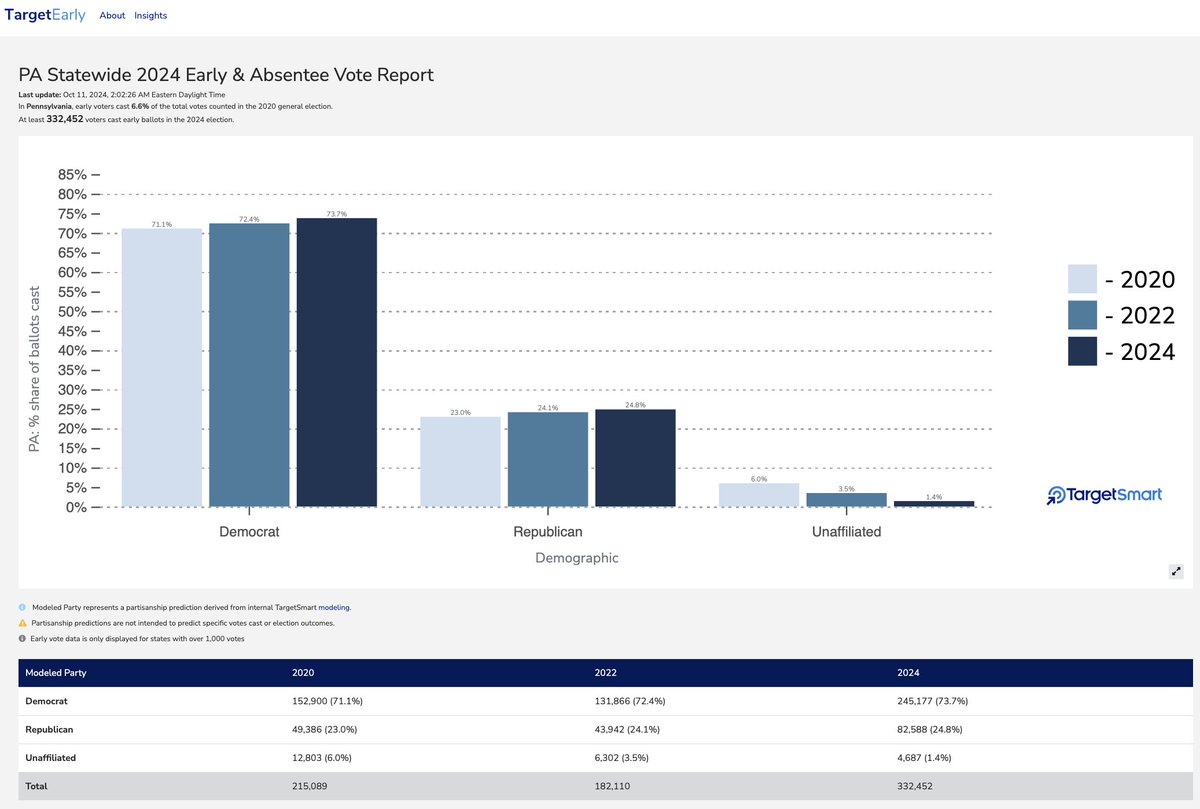Okay, we're finally getting to the point where there is enough early vote in several key states to begin to watch for emerging trends. So I'll kick off my first early vote thread of 2024 with a look at Pennsylvania.
One quick note before we begin - for the sake of brevity I will generally refer to all ballots cast before election day as "early votes", regardless of how they were cast (mail, early in person, etc). I may talk about mode from time to time, but generally just combine them all.
If you look at the vote reported in PA so far, Dems have a solid advantage in terms of party registration, though the gap is smaller than it was in 2020 at this same point, but that doesn't tell the whole story. More on that in a moment.

You'll also note that there are more total ballots cast reported so far than were at this point in 2020. I believe that has more to do with timing/reporting than anything else, but I'll dig deeper on that when I have time.
Now let's look at the early vote in PA by modeled partisanship. It shows a wider Dem lead than at this point in 2020. Why is that? The answer is simple - the model believes that the unaffiliated voters are more Dem than they were in 2020.

With our data we can look more closely at these unaffiliated early voters. This chart shows the racial breakdown of unaffiliated early voters at this point in each year. Notice how they are far more likely to be voters of color this year? The white share is 6 pts below 2020.

Let's go back to the total early vote numbers though. We can look at how these voters cast their ballot in 2020. Here we can see that an impressive 37% of GOP early voters cast their vote on Election Day in person in 2020, as compared to 11% of Dems.

Looking at gender, women are accounting for a larger share of the early vote in PA than they did at this point in 2020, and in-line with 2022, suggesting the post-Dobbs environment continues (as we have seen elsewhere an in other data).

Now, looking at the racial breakdown of women early voters in PA, we see the biggest increases among women of color, especially Black women whose turnout is 248% of their turnout at this point in 2020, compared to 146% for white women.

I'm not going to wrap this in a tidy package and say what we're seeing is indicative of a win for one candidate or another. We can't do that. I will say I expected to see more of a partisan gap closing with Republicans spending more resources on converting early voters.
While Republicans have converted a number of election day voters to vote early, Democratic turnout, especially among voters of color, has negated those potential gains for the Trump campaign. Stay tuned, more states to come.

